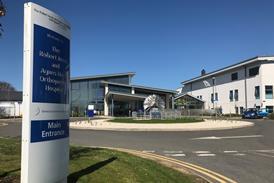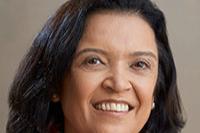Somerset Foundation Trust has shifted to a culture where excellence is explicitly reported on and valued, all underpinned by smart use of digital technology. Jennifer Trueland reports
When things go wrong, the NHS is expected to flag it up and – in the best-case scenario – to use it as a spur to improvement. The idea is to learn from mistakes and ensure it doesn’t happen again.
In most cases, however, things go right. Sometimes they even go brilliantly well. So shouldn’t we be learning from the good stuff and making sure it does happen again, and again, and again?
Sponsored by
This is the approach taken by Somerset Foundation Trust. The relatively newly merged organisation is working hard to embed a culture of continuous learning and improvement, without blame – and much of that is about finding out what’s going well, what makes it so good, and spreading the knowledge across the trust.
“There are a whole spectrum of patient interactions and events that we can learn from, and if you look at just the bad, that’s only a very small percentage,” says James Coulson, consultant vascular surgeon and clinical director for patient safety with the trust. “But if you just talk about the bad ones, you miss out on 90+ per cent of all the interactions we have. So the whole system has changed to one where we need to learn from everything.”
The new culture assumes that yes, you can learn from bad days, but you can also learn from standard and excellent days, he adds – but reporting an incident, of whatever type, has to be the start of a learning process.
The shift to a culture where excellence is explicitly reported on and valued has been underpinned by smart use of digital technology. The trust deploys Radar Healthcare software across the organisation, essentially bringing virtually everything connected with their patient safety and risk management processes into one place. This enables simple reporting of excellence, and also provides the ability to delve into the factors that make something work. But it’s about more than the technology – it’s also about the emphasis that the trust puts on the positive.
Somerset Foundation Trust has an organisation-wide system for reporting excellent, explains Laura Walker, head of patient safety and learning. “This is done electronically on our intranet page. We encourage staff to report episodes of care that went well so that we can learn from those episodes of care. We’ve done it for a long time, but now we’re working to make it more prominent.
“The manager or that area lead will receive that report of excellence, of what went well, and they will drill down to work out what was it, in that occasion, that worked well, that had that positive outcome, because what we want to be able to do is repeat that the next time. So we’re learning to look at the good stuff, acknowledge the good stuff, celebrate it, and take it forward.”
Even when something “bad” happens, there can be positive learning, she says. “Sometimes some things go well in terrible situations. The outcome might not be what you wanted it to be, but that doesn’t mean that everybody didn’t do the right thing.”
Getting information about good practice out there to staff is also important, says Pippa Richards, patient safety lead nurse, and again, digital makes it easier. “We’ve introduced safety huddles, initially across acute [services], but we’ve also introduced them to our mental health and community colleagues. What goes hand in hand with that is the “huddle board”, which are up all the time on the ward, and they display incidents. They’re a great way of displaying excellence reports – everyone can see them, and then they can be discussed in the huddle. It gets the information out there in a really visual way.”
It’s important to look at systems as well as individuals, says Mr Coulson. “We’ve got various processes where people go above and beyond their role and they absolutely should be reported back and rewarded for that. But it’s also about learning from an interaction and a positive and excellent event rather than a single, excellent individual.”
There can be crossover between the excellent system and individual, he says, but it’s about looking, for example, at an operation for a ruptured aneurysm which went particularly well, with fantastic team dynamics. “It’s about seeing what we can learn from them: why did that go so well and others not so well? And what can we learn to make every ruptured aneurysm that smooth, every time?”
Steve Thomson, associated director of integrated governance, points to the benefits of having a wealth of data on factors that contribute to patient safety, all able to view in one place. This means that when you’re looking at an incident or interaction – positive or negative – it’s possible to drill down into the detail of what was actually going on at that particular moment. “Historically we’ve had much more limited systems. One of the really exciting things for us is that we have a digital system now that allows us to pull all these different things into one system. There’s also the ability to bring in information about how many people we had on shift, what was the acuity of patients, all those sorts of things. We’re still in the process of developing that, but it’s very exciting, looking to the future.”
Embed a culture of continuous learning
- 1
 Currently reading
Currently readingEmbed a culture of continuous learning
- 2
- 3




























